If you’ve ever seen any photos from the Banff townsite looking down the main street towards an imposing mountain looming over town, you’ve likely seen Cascade Mountain. Due to its prominence in photos taken from within the town, I’d reckon that Cascade Mountain is the most photographed mountain in all of Banff. In the early 1900s it was also well known – for its high-grade anthracite coal deposits.
The Bankhead mine was open for 22 years, and was located close to Lake Minnewanka at the base of Cascade Mountain. In it’s heyday, the town of Bankhead was a modern community with water supply, a sewer system, electricity and street lights, amenities that were not yet present in the nearby communities of Banff and Canmore.
The way the rock of Cascade Mountain folds upward meant that mining the coal seams was literally an uphill battle, requiring shafts to be drilled into the mountain at higher and higher elevations to follow the seams. The uppermost level of the expansive mine workings, the C-Level operations, is what C-Level Cirque derives its name from. This large cirque and its lookout are located high up on Cascade Mountain’s eastern flank. The C-Level Cirque hike starts from what was once the Bankhead townsite, passing an abandoned house and numerous old mineshafts as it climbs up the side of the mountain. This part of the valley is particularly hospitable to fungi, and there are hundreds and hundreds of mushrooms of various types all along the side of the trail. Higher up, the C-Level Cirque trail reaches the steep talus slopes on the side of Cascade Mountain, home to countless pikas and marmots. From the top of the trail, the views towards Lake Minnewanka are stunning, as well as those looking southwards down the Bow Valley towards Canmore.
Quieter than other Banff hikes so close to the townsite (Tunnel Mountain or Sanson Peak), the C-Level Cirque hike in Banff is one of my favourite hikes to do in the area not only for the stunning views from the top, but for the diversity of terrain and smaller sights to see along the way.
Continue reading this blog post for everything you need to know to experience the C-Level Cirque hike in Banff for yourself, including distance, elevation gain, how to get there, the best time to visit, and lots of photos of my experience.

Note: The C-Level Cirque hike is located in Banff National Park, meaning that a valid park pass is required. Day passes can be purchased at the park gates and are per day per person, but if you’re staying a week or longer, it’s more cost-effective to just buy an annual pass instead.
Before visiting Banff National Park it’s essential to read up on the Parks Canada rules that must be followed to avoid tickets and/or fines. When hiking it’s important to avoid harmful practices such as disturbing plants or rock-stacking, or removing any natural object from flowers to rocks, as it’s important to leave the environment as natural as possible for the animals and for fellow hikers to enjoy in perpetuity. As many flowers as there are, there are few enough that if we all took one, then there wouldn’t be any left. If you’re after a souvenir to take home with you, there are tons of gift shops in the Banff townsite to check out. Otherwise take only photos, leave only footprints.
If you haven’t heard of Leave No Trace principles, they’re also really essential to read up on before heading anywhere into the outdoors in general. Following these important principles basically means doing your best to leave beautiful places like C-Level Cirque as good (if not better) than you found them, both for their preservation and for the enjoyment of other visitors.
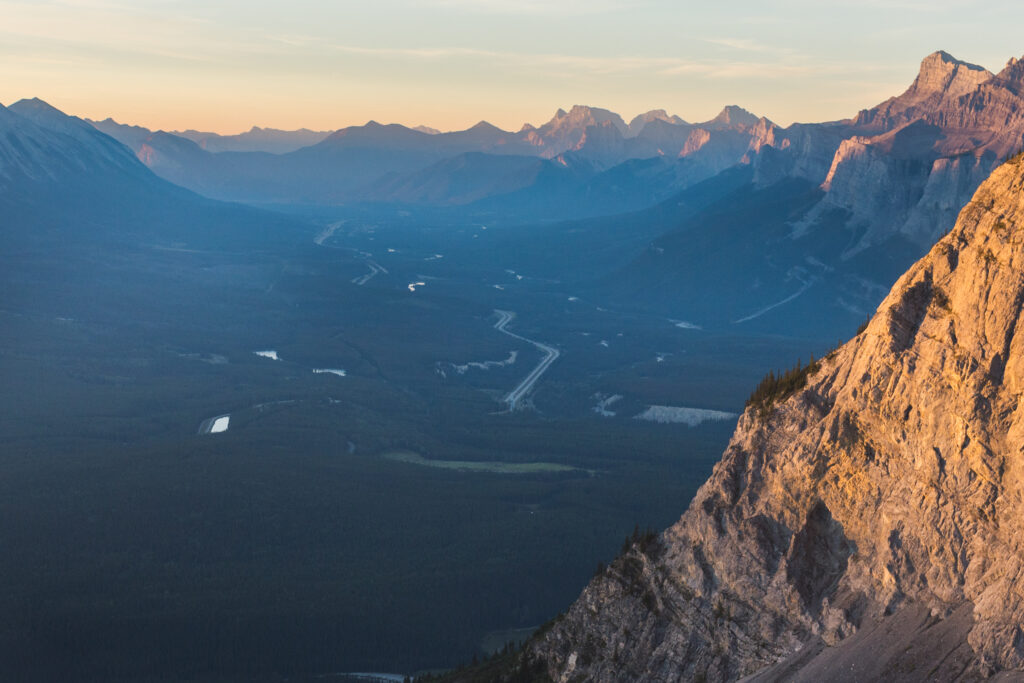
The view looking down the Bow Valley from C-Level Cirque is almost the exact opposite of the view from Wind Ridge on the opposite end.
C-Level Cirque Round Trip Details
Distance: 11.5 KM / 7.1 MI
Elevation Gain: 774 M / 2539 FT
Hiking Time: 4 HRs
Hiking & Safety Tips
- Prepare for the possibility of wildlife encounters. Bear spray is a must whenever travelling in bear country, as well as learning how to use it. Though your chance of an aggressive bear encounter is low, it is always better to be prepared with bear spray. Bear bells are proven to be an ineffective bear deterrent, and are actively discouraged by Parks Canada. The best way to let bears know you’re around is simply to use your voice. Make sure to keep a respectful distance from wildlife and never feed the animals. It may seem kind but it doesn’t just kill wildlife and put people in danger, it’s also illegal.
- Research current trail conditions and make sure you are well-informed about the route before you leave, and assess if it is within your capability. Be aware of what time it gets dark and check the weather forecast. Make sure to tell someone where you’re going and when you expect to return. Every year as more and more people try hiking for the first time, the number of rescues goes up. Being prepared is the best defense.
- Pack everything you need for a successful hike, including enough water and energy-rich snacks. Remember to pack out everything you pack in though – don’t expect to find a convenient garbage can halfway up the trail. Bring appropriate layers (remember you’ll warm up once you start hiking) and sun protection. Hiking poles may be helpful but are not required. In addition to not leaving any garbage on the trail yourself, I highly recommend bringing a garbage bag and collecting any trash that you do see on the trail. You’re guaranteed to make the hike up to C-Level Cirque a more enjoyable experience for the next person.

How to Get to C-Level Cirque Trailhead
The C-Level Cirque hike starts about 15 minutes from the Banff townsite at the Upper Bankhead Day Use Area, located off of Lake Minnewanka Scenic Drive. Drive straight out of Banff via Banff Ave (the main street). You’ll see Cascade Mountain right ahead of you and as you drive you’ll begin to pass it on your left. Continue straight beyond the highway for 3.5 km, ignoring several turnoffs to the right. Turn off to the left into the Upper Bankhead Day Use Area and begin your hike here. It’s important to note that the trail is not accessible from November to May, as this section of the Lake Minnewanka is closed during those months. Due to avalanche risk you likely wouldn’t want to do this hike during winter anyway.
Click here to open the exact trailhead location in Google Maps.
Hiking to C-Level Cirque
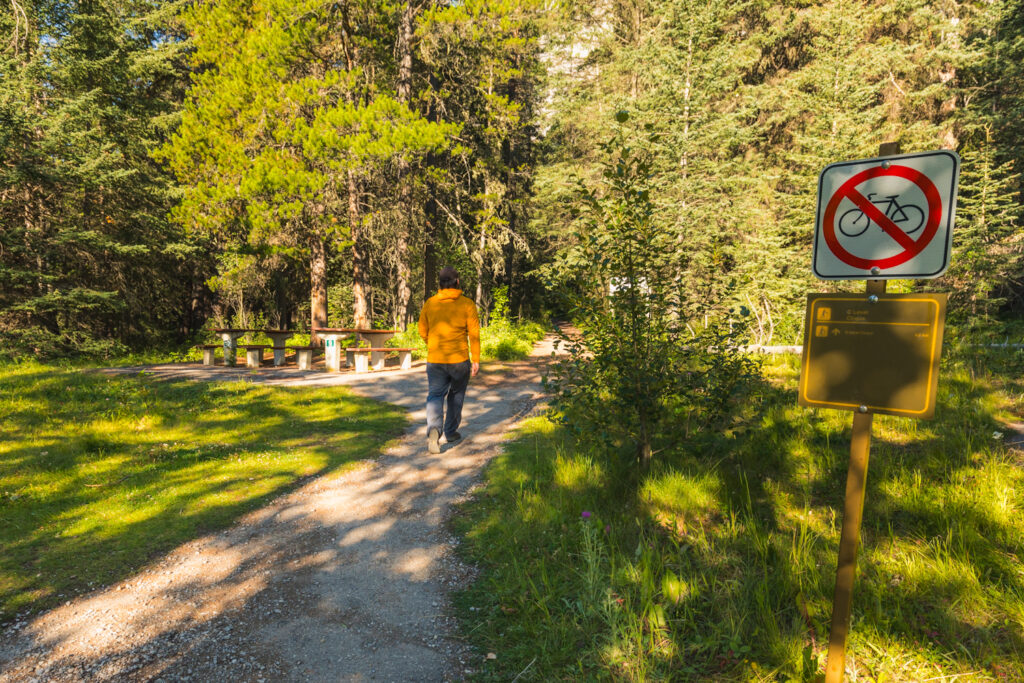
From the Upper Bankhead Day Use Area, following signs for C-Level Cirque.

The C-Level Cirque trail switchbacks a couple times but mostly is a fairly straightforward uphill hike through the woods.
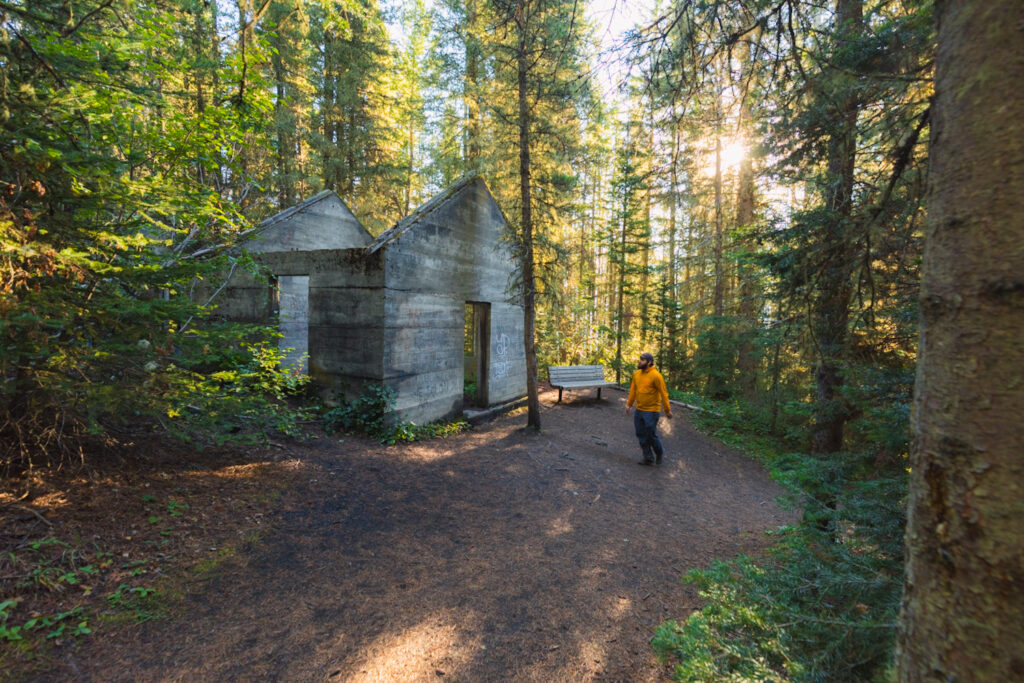
Passing an abandoned house.
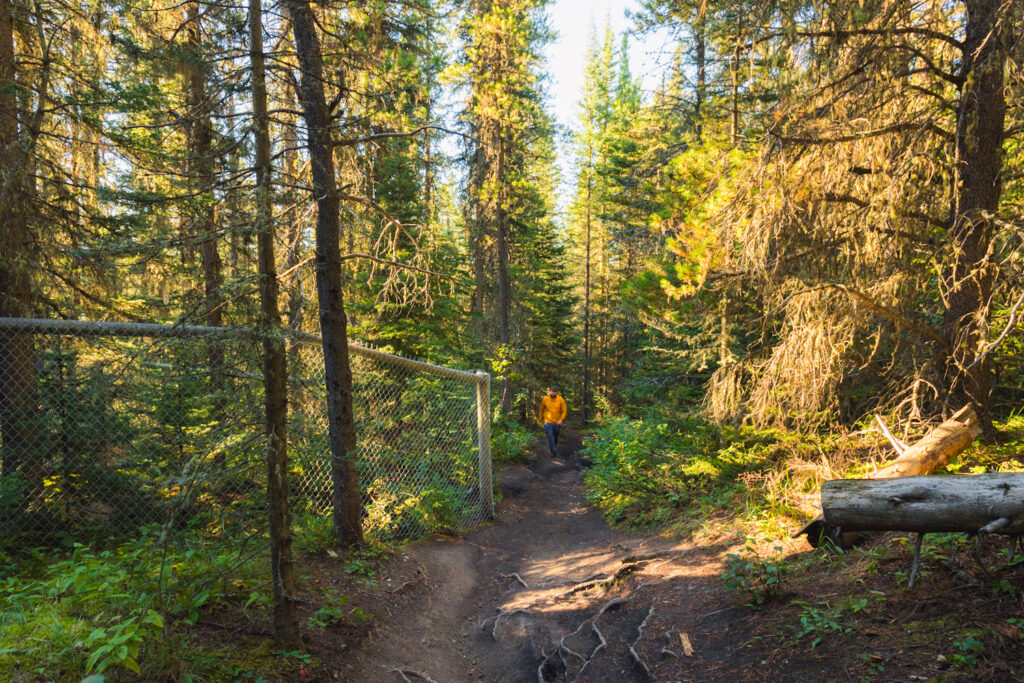
There about a dozen old mineshafts just off of the trail, all of which are fenced off for safety.
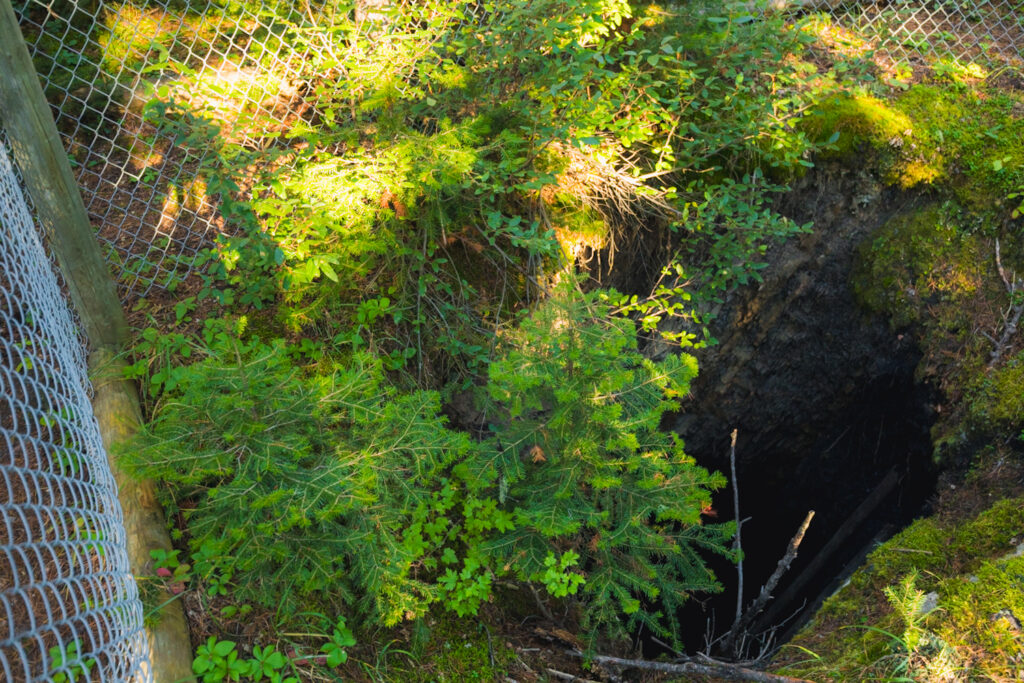
Don’t fall in.
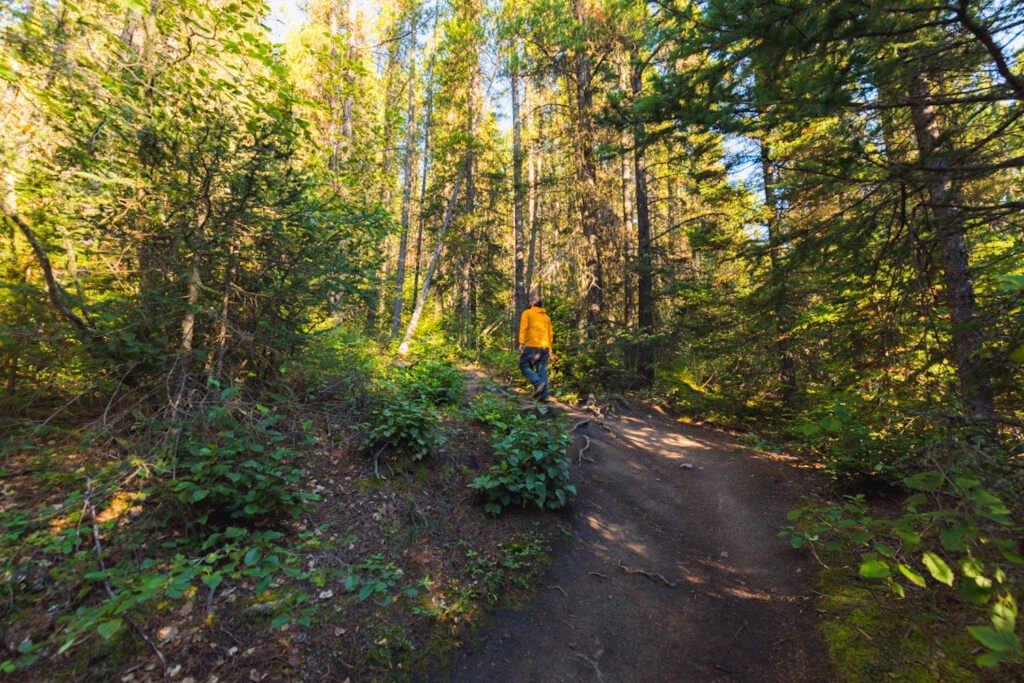
After passing the mineshafts, the C-Level Cirque trail switchbacks a couple more times before heading up towards the side of Cascade Mountain.
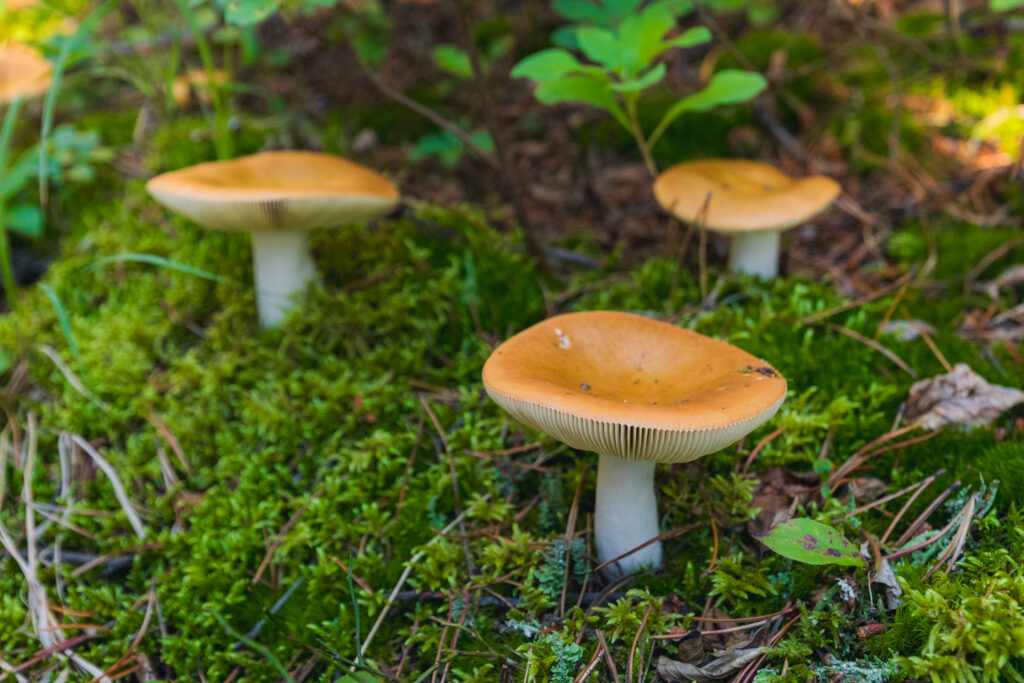
I’ve included some pictures of the many many mushrooms I saw alongside the trail. I couldn’t include all the mushroom photos I took because they would then take up most of the post. All of these mushrooms I spotted and photographed without needing to venture off the trail, potentially damaging other mushrooms. They were everywhere!
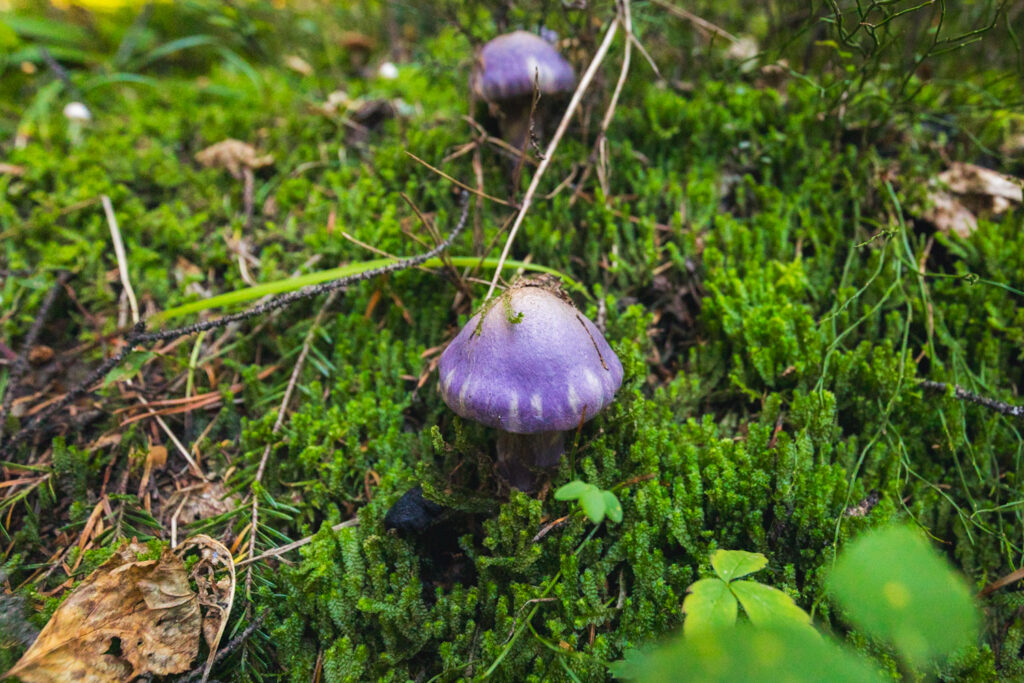

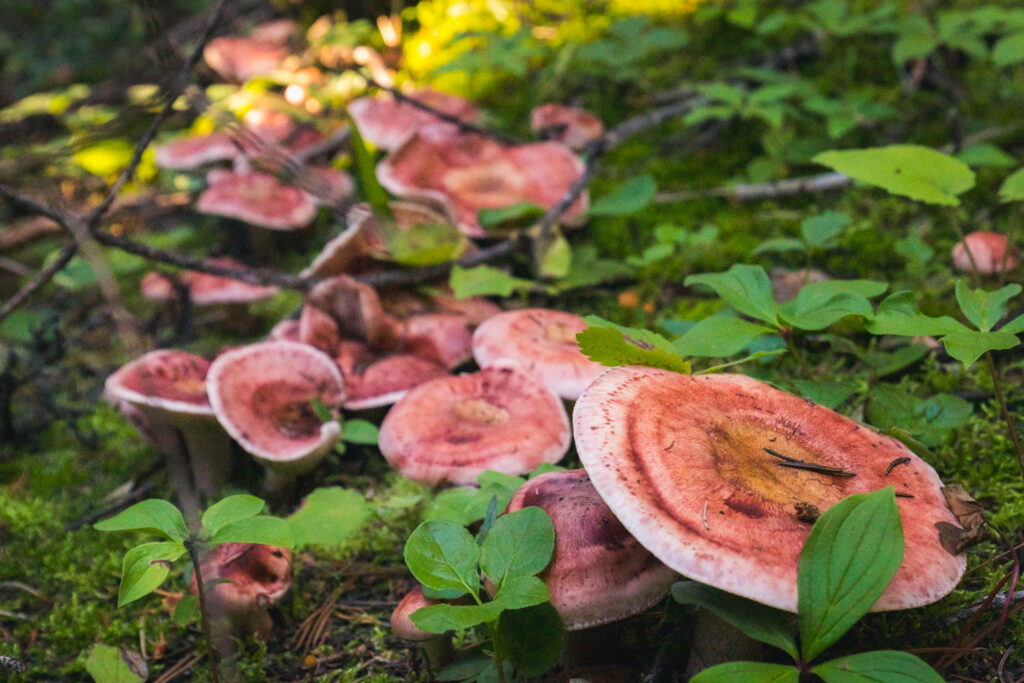

C-Level Cirque, and the end of the official trail. Cascade Mountain is incredibly impressive when standing this close.

The trail continues up increasingly steeply alongside the talus field. Listen here for the squeaking of pikas and whistling of marmots living in the rocks.
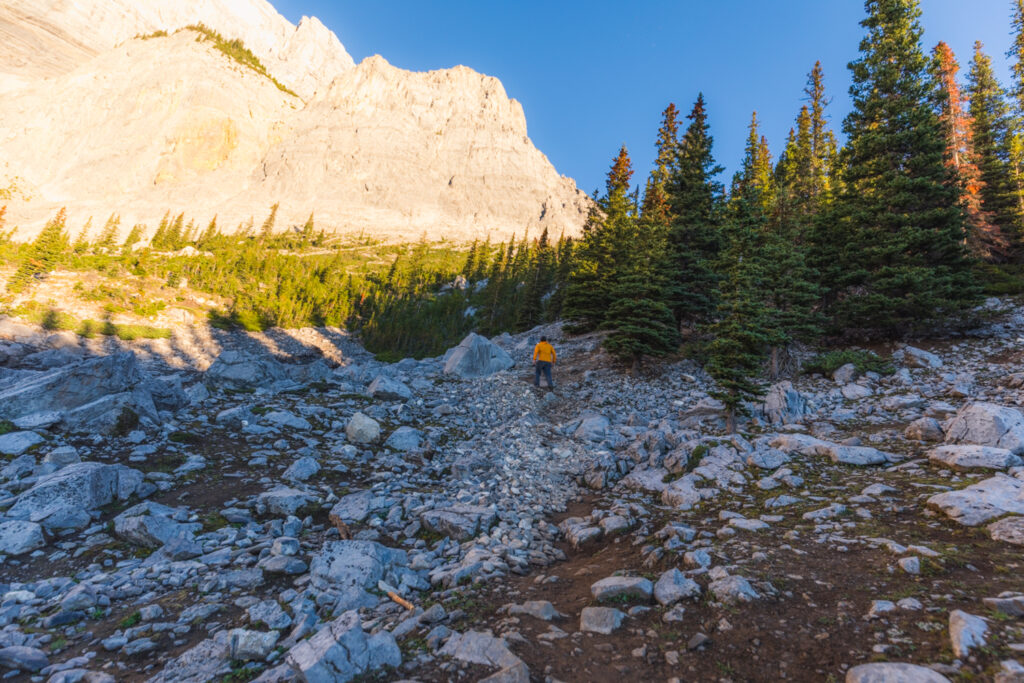
The lookout at the top of the C-Level Cirque trail is past the woods at the very base of the steep cliffs visible above.
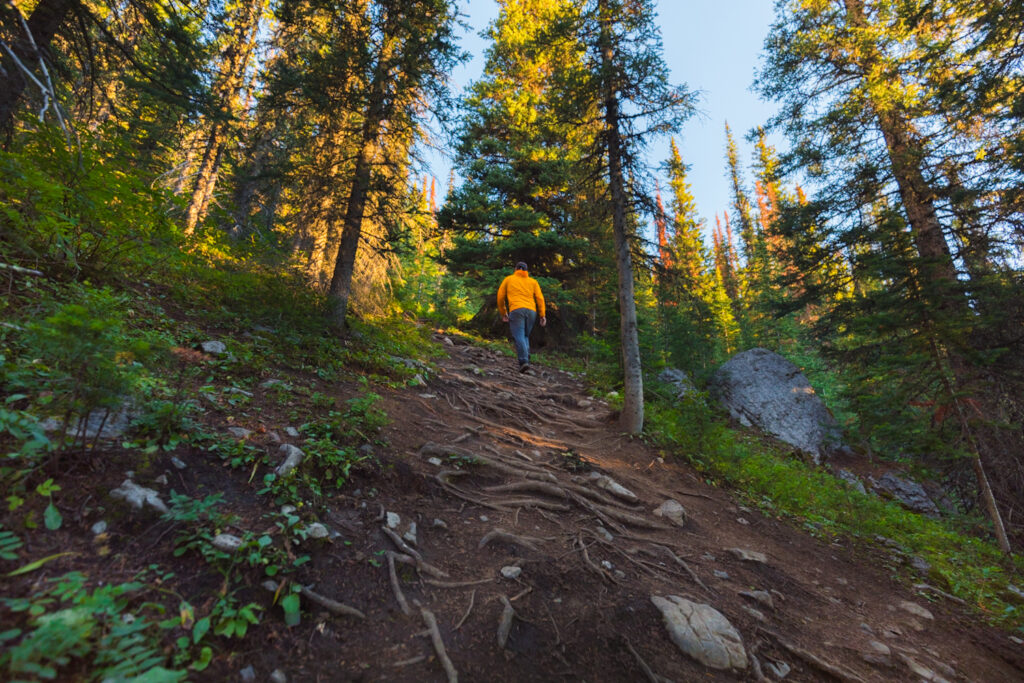
The trail gets quite steep and rooty as it heads up, ducking in and out of the woods.
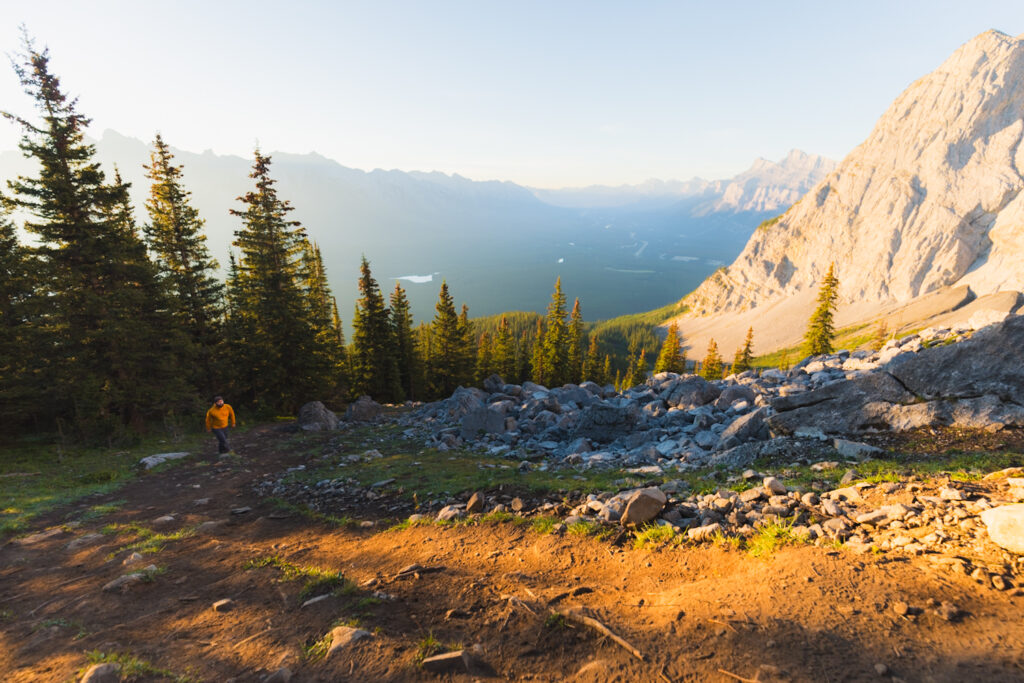
Keep to the right of the talus field as the trail winds up towards the lookout.
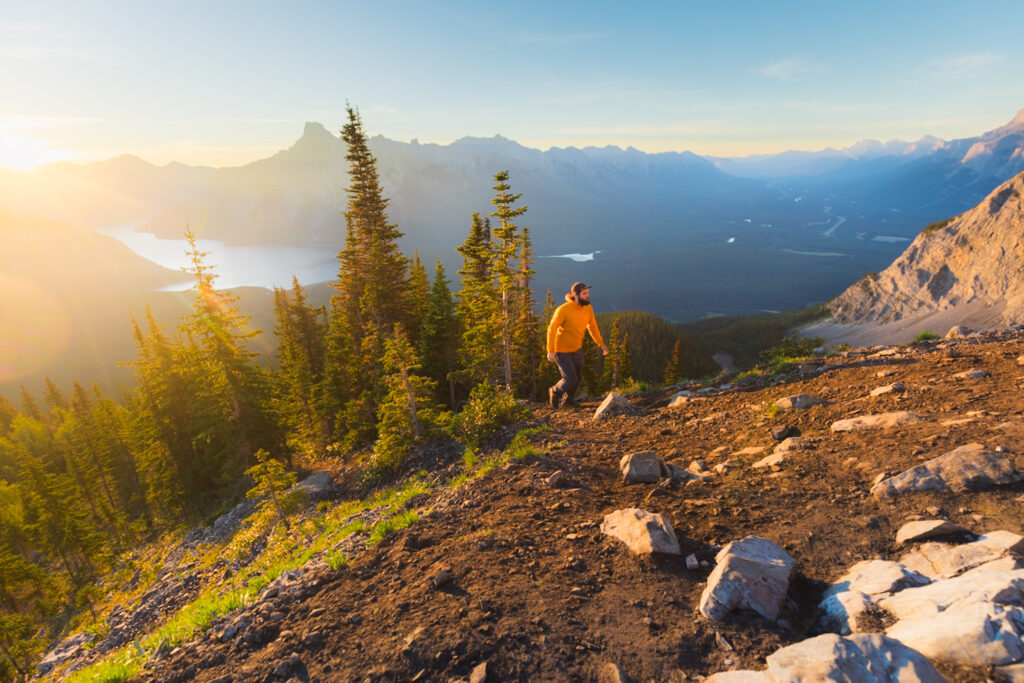
Views from the small lookout area wedged between the top of the forest and the bottom of the step rocky cliffs. Iconic Lake Minnewanka is visible at left. In the centre is smaller Two Jack Lake, and to the right of that and further away still is Johnson Lake.
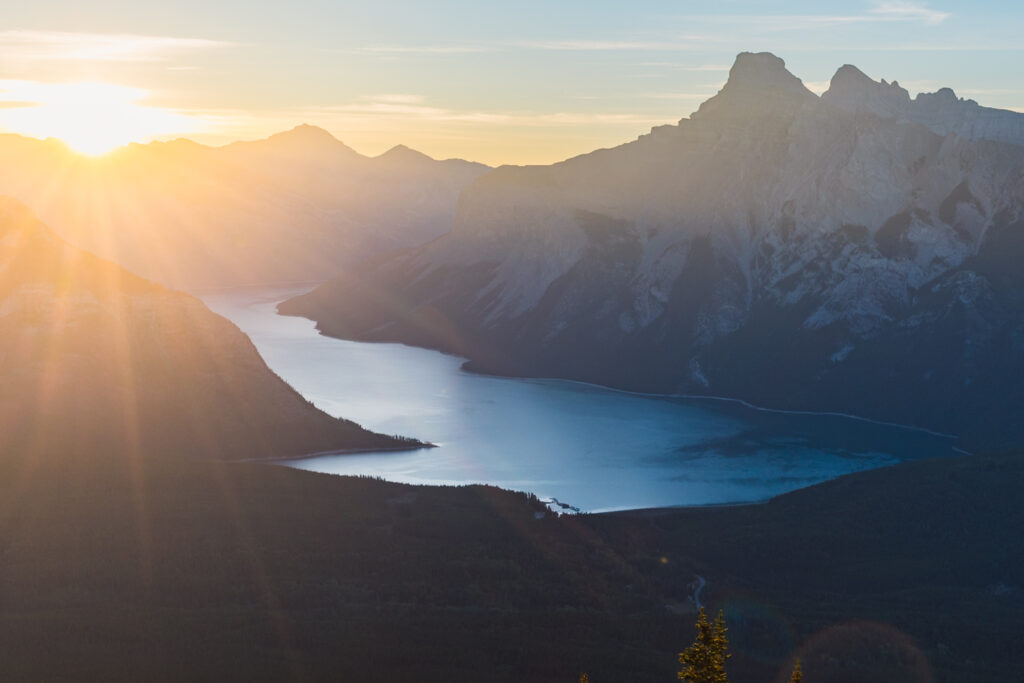
Lake Minnewanka.
Recommended Hiking Gear



Water is a must whenever I’m hiking, especially if the sun is going to be out. My favourite water filter I’ve used is the Katadyn BeFree 0.6L, which unlike other water filters I’ve used packs up really small and lightweight. For hikes where I know there won’t be any readily available water sources along the way, I make sure to bring my own. The Hydrapak Stow 1L bottle is my go-to, for the same reason that it’s made of a soft plastic that folds up and doesn’t take up any more extra space than necessary in my pack. Finally, Aquatabs are another great option for purifying water, with one tablet being suitable for one litre of water. I previously used the Grayl water filter while travelling internationally, and though I found its hard body more convenient for day to day use and easier to drink from, it has a little too much bulk for my fast-and-light style of hiking.



The secret to all my photos of gorgeous sunset and sunrise mountaintop views? A lot of hiking in the dark. And let me speak from personal experience when I say that the last thing that you want to happen when hiking is to be caught in the dark without a headlamp. I used the Black Diamond Spot 400 for years and it worked great – until I lost it on top of a mountain somewhere. The only downside to it was having to worry about the batteries dying, though there’s also a slightly more expensive version that has a rechargeable battery. Nowadays I’m using the Petzl Actik Core, which is a bit pricier than the more budget-friendly Black Diamond, but is also brighter, more comfortable (in my opinion), and has a hybrid power system that is rechargeable but can also take AAA batteries if needed.
You won’t see me using trekking poles on shorter hikes often – but on long hikes and backpacking trips, as well as certain scrambles, they are an absolute lifesaver. I’ve invested in a high quality ultra-lightweight pair of MSR DynaLock Ascent carbon poles which, while pricey, I don’t regret one bit. If you’re not entirely sure how much use you’re going to get out of a pair of trekking poles, the best budget-friendly option would be the Trekology Trek Z 2.0. Amazon does sell a lot of cheaper Made in China-style trekking poles for cheaper, but these usually are much much heavier and not worth buying.
All the best and most long-lasting cables and power banks I’ve ever owned have been Anker. I once had a phone cable from them that lasted me over three years of daily use! That’s why I keep an Anker PowerCore Essential 20K power bank on me. Like many people I use my phone for a lot of stuff when hiking (checking in with family, using online maps, taking photos, flying my drone) so I like to be prepared for that low battery warning by having a backup power source on me just in case.



The only socks I ever buy for myself are from Darn Tough, and I almost always make sure to wear them when hiking. After years of having no problems only wearing these comfortable and rugged socks for hikes, I accidentally wore a pair of no-name socks on a hike last year and ended up with blisters on both feet. Safe to say I’m back to sticking with the Darn Tough. And the best part? They have a lifetime guarantee, meaning that if they ever wear out you can send them back for a brand new pair. For hiking footwear I go between a pair of lightweight approach shoes for quick and dirty mountain ascents or anything involving scrambling and more heavy-duty boots for longer treks. I’ve worn a couple different versions of the lightweight but super durable Arc’teryx Konseal FL 2 approach shoes for a few years now and am very impressed with the durability. I also really like the thick toecap that keeps me protected every time I stumble into a root or large rock. For longer, tougher, or muddier treks I rely on my LOWA Camino EVO GTX, which I find insanely comfortable and made of very high quality.



I wear my Ar’teryx Gamma Lightweight Pants on every single hike I go on, and on many days when I’m not hiking. After several years of abuse they are still holding together extraordinarily well, with only a few small holes from where I’ve fallen down and some slight stains from being repeatedly coated with mud. They’re lightweight, breathable, and super comfortable. For lightweight and breathable hiking tops I’m a big fan of both the Patagonia Capilene Shirt and the MEC Core Shirt. My Arc’teryx Squamish Hoody shows up in a lot of my photos. It’s super lightweight and packable, and does a great job of cutting the wind while also being pretty breathable. I also have an Arc’teryx Atom Hoody and Arc’teryx Beta LT that I pull out for cooler or wetter conditions.
I hope you enjoyed this guide to hiking C-Level Cirque in Banff National Park! Feel free to leave any questions in the comment section below or to contact me directly via social media.
